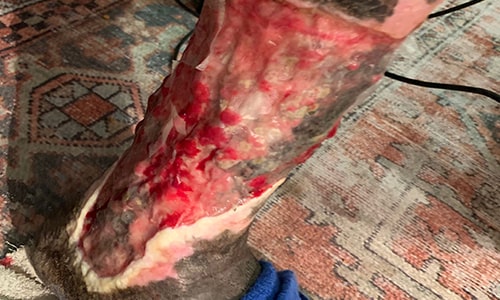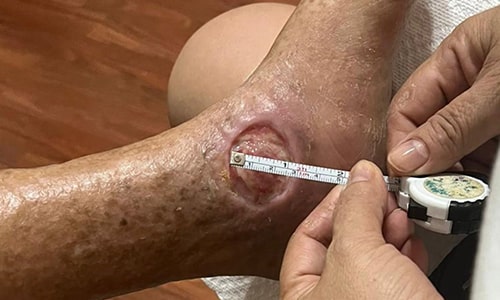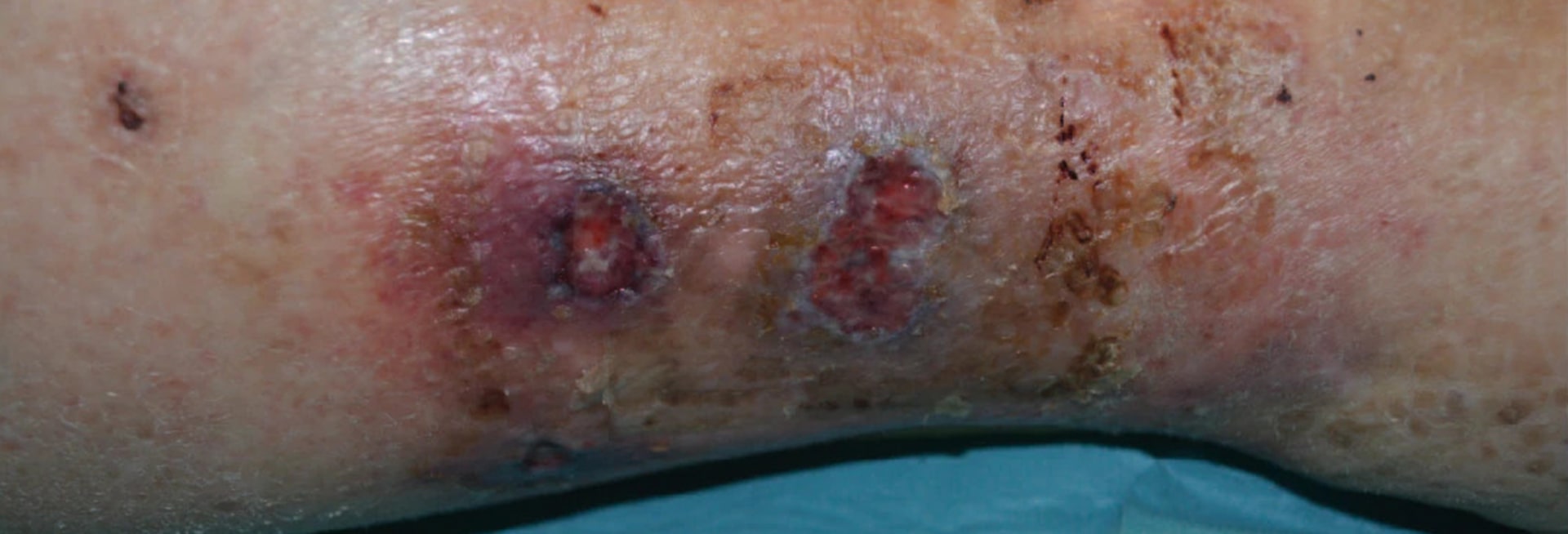Venous Leg Ulcers are common wounds that form on the legs, feet, and toes. At the practice of Dr. Sapna Pandya, with offices in the Washington Heights and Manhattan Valley neighborhoods of New York City, New York, wound care specialist Sapna Pandya, DPM, provides advanced treatments for venous and arterial ulcers for patients three and up. Dr. Pandya speaks English and Spanish fluently and treats every patient as a valued individual. To learn more about the treatment of venous and arterial ulcers, call the nearest office or book online today.


Question and Answer
- What are venous and arterial ulcers?
-
Venous and arterial ulcers are open wounds that develop on the lower extremities, like your legs or feet. Though often mentioned together, venous and arterial ulcers aren’t the same. Venous ulcers
Venous ulcers form below the knees, typically on the inside of your ankles. They often develop slowly and don’t always cause pain.
Arterial ulcers
Arterial ulcers typically form on the outsides of the heels, ankles, or toes. They’re characterized by inflamed skin with ragged edges. These wounds don’t bleed or cause skin discoloration.
Dr. Pandya and her team speak English and Spanish fluently. They regularly serve clients from all backgrounds, including members of the Black and Hispanic communities, who are also more likely to have venous and arterial ulcers.
- What are the symptoms of venous and arterial ulcers?
-
The symptoms of venous and arterial ulcers include:
- Inflammation
- Swelling
- Aching
- Scabbing or flaking skin
- Discharge
- Hair loss
- Deep open wounds
- Leg pain, especially at night
As the ulcer grows in size, you might also have difficulty walking or performing other routine tasks.
- What causes venous and arterial ulcers?
-
Venous and arterial ulcers occur for various reasons, including:
Arterial ulcers
Arterial ulcers form when your arteries become partially blocked or completely clogged. Your arteries carry nutrient-rich blood to the organs and tissues throughout your body. Common causes of arterial ulcers include smoking, high blood pressure, kidney failure, and high cholesterol.
Venous ulcers
Venous ulcers occur when the vein valves in your legs stop working. Vein valves help pump blood back to your heart, but if they don’t work properly, the blood pools in your legs and feet. Over time, that pooling increases the risk of other medical issues, including varicose veins and deep vein thrombosis (DVT).
- How are venous and arterial ulcers diagnosed?
-
To diagnose venous and arterial ulcers, Dr. Pandya reviews your medical records, asks about your symptoms, and completes a physical exam. She also orders diagnostic imaging, like a venous ultrasound, to see how well blood circulates through your veins.
- How are venous and arterial ulcers treated?
-
Treatment of venous and arterial ulcers depends on various factors, including your age and the type and severity of the ulcer. Usually, Dr. Pandya recommends noninvasive treatments, like oral antibiotics, topical wound care, or wearing compression garments.
Amputation might be necessary if your circulation can’t be restored or if you have an infected wound or serious infection. The goal is to relieve pain, heal the wound, and reduce the risk of complications.



